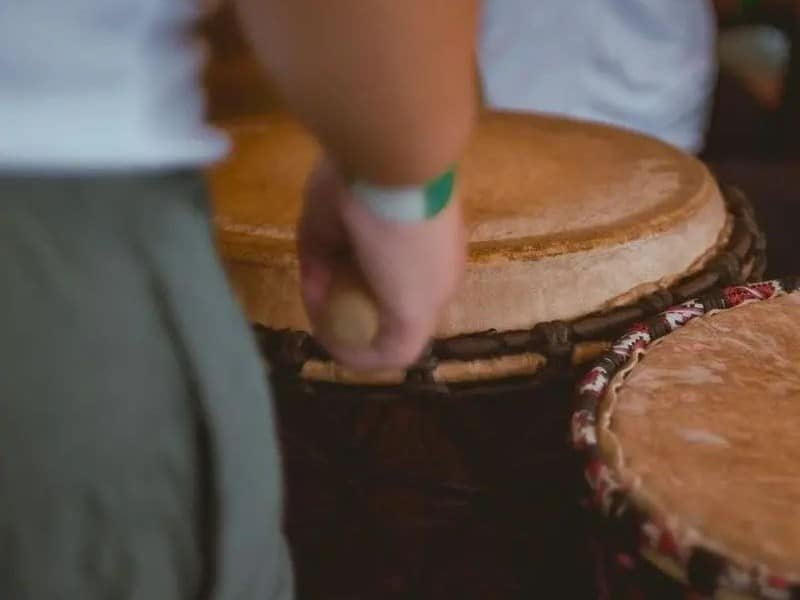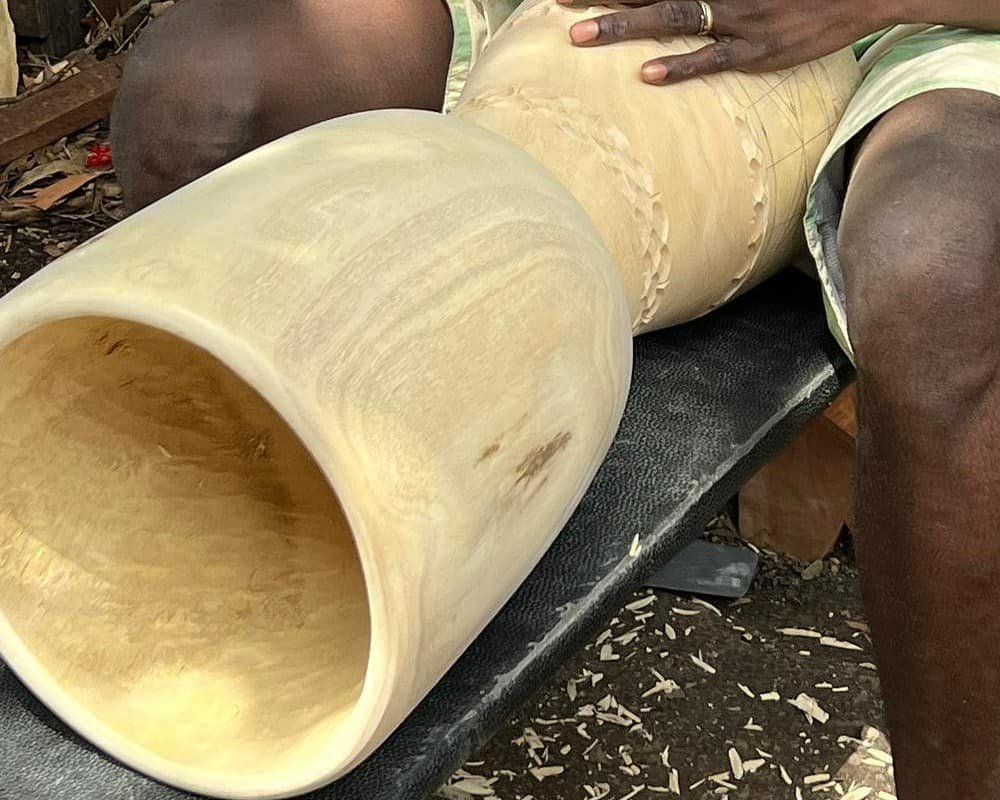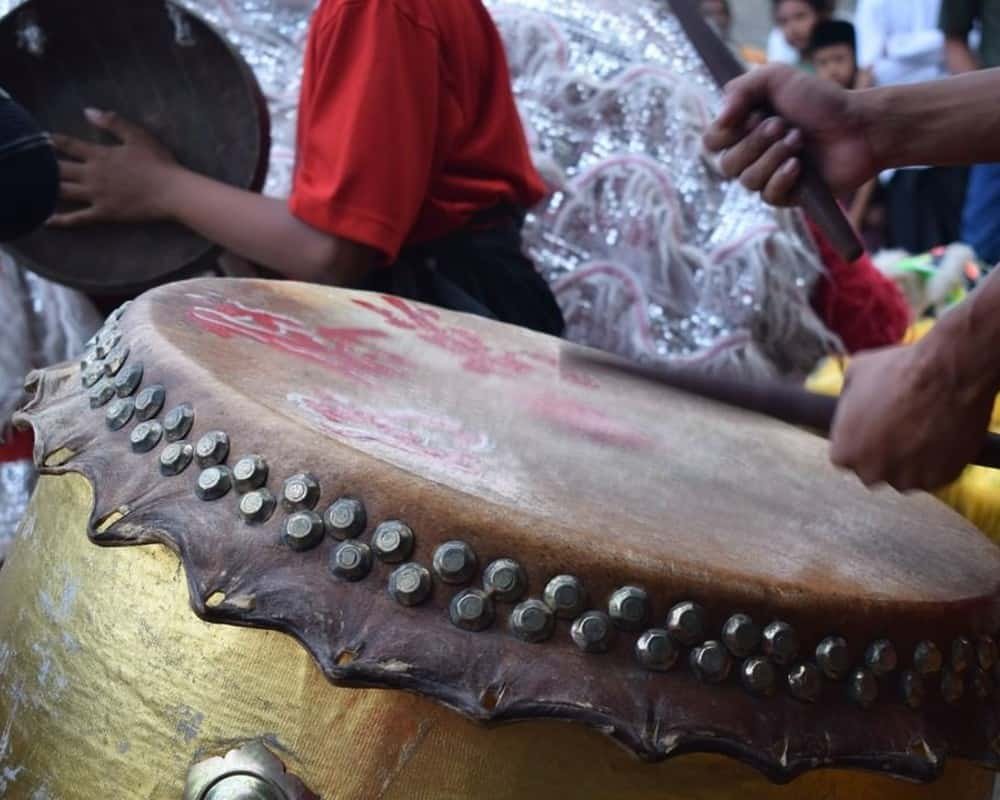Djembe Rhythms

Djembe is a musical instrument with African roots. It is a drum, shaped like an hourglass. It belongs to the class of membranophones.
Structure
Contents
The base of the drum is a single piece of wood of a particular shape: the upper part is larger in diameter than the lower part, causing an association with a cup. The top is covered with leather (usually goatskin, less frequently used skins of zebra, antelope, and cow).

The inside of the djembe is hollow. The thinner the walls of the body, the harder the wood, and the clearer the sound.
You can beat different rhythms on the djembe. The game for beginners consists of the simplest hand drumming beats. To begin with, you should learn each beat individually and then combine these elements.
How to Hold a Djembe?
Traditionally, in Africa, the djembe is played standing up, but in European countries, it is more commonly played sitting down – it is easier and requires less energy.
Sit on the edge of a chair or stool, relax your shoulders and move them slightly to the sides, do not press or push your elbows out, but keep them slightly relaxed.
Place the djembe between your legs, so that the bottom of the body rests on the floor and the instrument is placed slightly at an angle so that the sound flows freely out of the pipe. Fix the instrument with your feet so that the djembe is held firmly in place.
Consider the Basic Strokes
Below is a description of the basic drumming of the djembe beat
Ba
It is necessary to bring the fingers together and make a blow to the center of the diaphragm. It is important that the hand bounced quietly, as on a trampoline. The open punch can be done with either hand.
Cle
The blow should be made with the middle of the palm with fingers spread wide apart. The strike falls on the edge of the diaphragm. The fingers also hit the skin by inertia.
Co
The intermediate fight between the previous two. As a result, the hand is in the same position as in Ba. But it is necessary to strike closer to the edge of the diaphragm.
Slap
The left hand is placed in the center of the drum, it brakes the vibration. The right hand makes the slap. If you place the left hand near the edge of the blade, the overtones will be high.
Is Djembe Hard to Learn?
It’s a valid question, especially if you’re new to the world of drums and percussion. The djembe is a very popular instrument, known for its unique djembe tunes and versatility. But is it hard to learn?
The answer, like with most things, is that it depends. Some people find the djembe very easy to pick up, while others may find it a bit more challenging. It really comes down to how much time and effort you’re willing to put into learning the instrument.
If you’re serious about learning the djembe, we recommend finding a good teacher. A good teacher can provide you with the guidance and support you need to master the instrument. They can also answer any questions you may have along the way.
Of course, there’s no substitute for practice. The more you play, the better you’ll get. So, if you’re up for the challenge, go for it! We’re confident you’ll be able to learn the djembe and produce some amazing music.
Frequently Asked Questions
Answers to frequently asked questions.
What is the djembe also called?
The djembe is called the African drum. It is also called the Mandé.
How tight should a djembe head be?
A djembe head should be tight enough to produce a clear, crisp sound, but not so tight that it buzzes or dampens the vibration of the drum.
Why does my djembe ring?
The head of the djembe is usually made of animal skin, which is why it rings.

Also read:
Conclusion
A djembe is an African drum beat made in the shape of a goblet from a single piece of wood. Its top is covered with leather (most often goatskin). Because of its shape and the fact that the percussion surface is located only on one side, the djembe is referred to as a one-headed cup drum, a member of the membranophone family.
Cup-shaped body contributes to the Helmholtz resonance effect, so the djembe is characterized by deep and resounding bass. This drum is played by hand without any additional devices.




